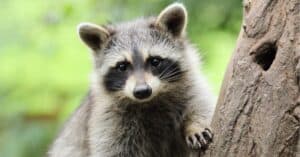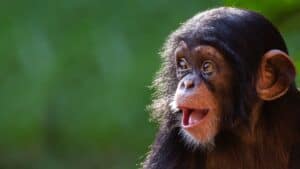Raccoons are one of the most successful species in North America. They range all the way from Canada to Panama and are found in all the lower 48 states. They’ve made themselves at home in our cities and suburbs just as much as on the farms and in the forests. They’re often seen as a nuisance due to their habit of getting into garbage cans. They’re also viewed as a serious danger because of the diseases they can spread. However, they have a useful environmental role to fill, eating dead animals, fish, snakes, and insects.
One reason raccoons have multiplied so extensively is that many of their natural predators have been hunted down to keep them away from populated areas. This has allowed raccoon numbers to rise, especially in areas where habitats are now dominated by people. We’ve compiled a list of the raccoon’s most common natural predators. Would you rather have raccoons in your neighborhood or a few of these beasts?
Fun Facts About Raccoons

Raccoons typically have litters of two to five kits every year.
©Tyler Plum/Shutterstock.com
- Adult raccoons weigh about 35 pounds and measure 3 feet long from nose to tail.
- Raccoons are most active morning, evening, and night.
- The masks on their faces reduce glare and assist in night vision.
- They have five-fingered hands and feet that they use nimbly to handle and wash their food and even open doors. They have opposable thumbs and an excellent sense of touch.
- They are excellent swimmers and climbers. They can rotate their back paws backward to help them climb head-first down trees.
- Raccoons eat plants and small animals. They like nuts, fruits, insects, small mammals, frogs, and of course, “people food” when they can get it.
- They have two to five babies, called kits, per litter and one litter a year.
- They do not hibernate but go into a state of reduced metabolism called torpor.
- They can carry rabies, leptospirosis, canine distemper, and other serious transmissible diseases.
Natural Raccoon Predators
Because raccoons live in habitats ranging from the sub-arctic to tropical rainforests, their predators are as diverse as their environments. Here are some of the major threats they face:
1. Alligators
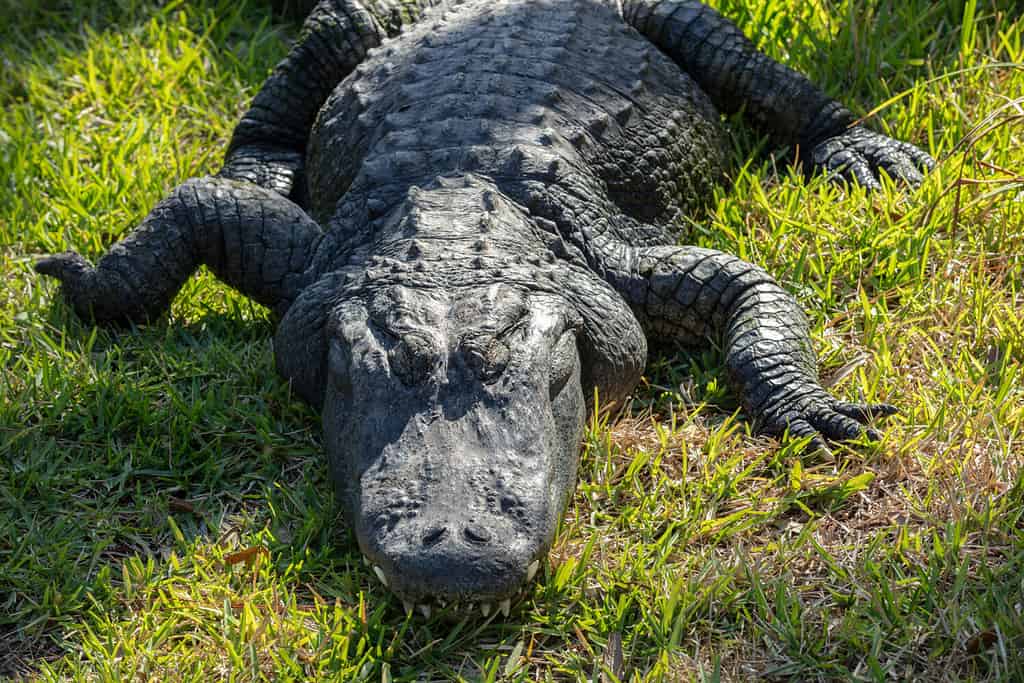
American
alligators
live in the coastal areas of most of the southern states.
©J.A. Dunbar/Shutterstock.com
Alligators can grow as large as 14 feet long and weigh up to 990 pounds. They spend much of their time floating in swampy water looking like bumpy logs with their eyes and nostrils above water. As reptiles, they regulate their body temperature by sunbathing on mudbanks. A raccoon who wanders too close to them, in or out of the water, can be snatched and drowned for a quick meal. The ranges of raccoons and alligators overlap along the entire southeastern coast of the United States, from North Carolina to Texas. Alligators have been spreading inland along some rivers in the South and have even been sighted as far north as Tennessee.
2. Bears
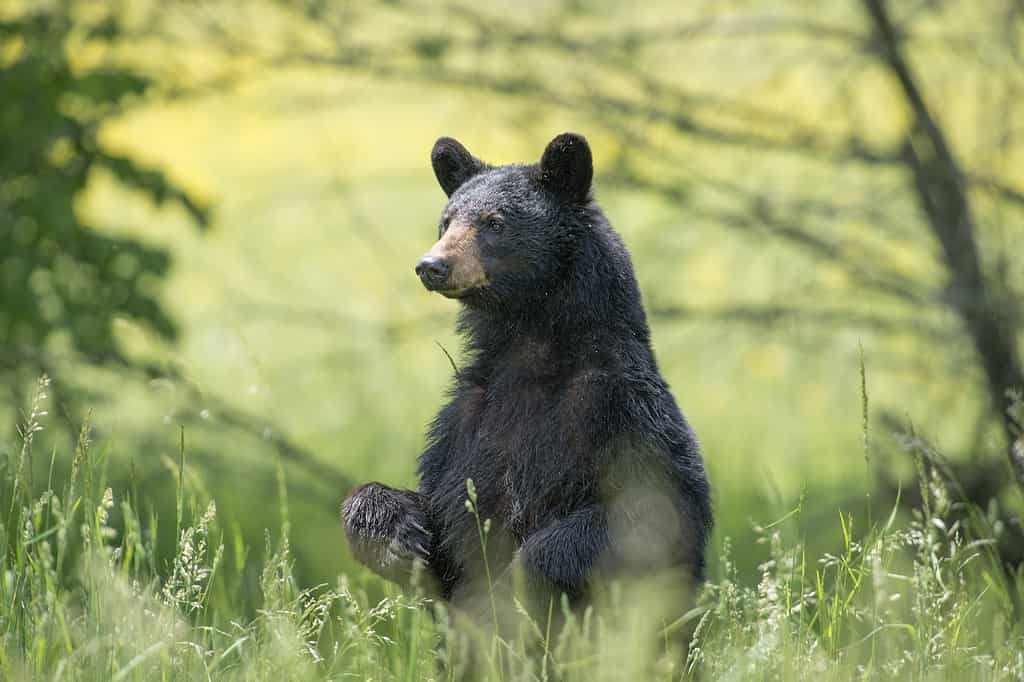
Black bears, and their larger cousins, grizzly bears, eat raccoons on occasion.
©Wirestock/iStock via Getty Images
Black bears and grizzly bears sometimes eat raccoons, but this is only a small part of their diet. They prefer to eat berries, nuts, fruit, honey, and sometimes fish. But if they are hungry and a raccoon is nearby and catchable, the bear will go for it. Bears can outrun raccoons and are able to follow them up into sturdy trees.
3. Bobcats
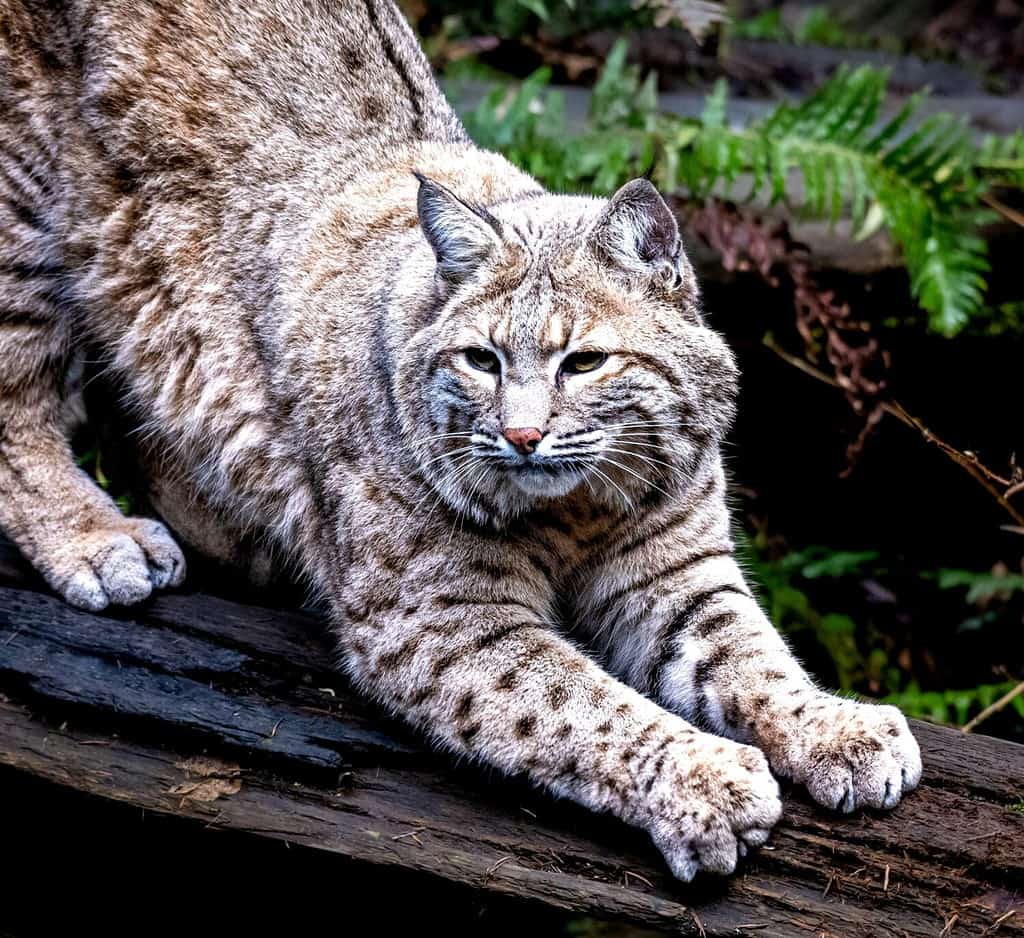
Bobcats live in many of the same habitats as raccoons.
©Jeff Westhead/Shutterstock.com
A predator that lives in many of the same places as the raccoon is the bobcat. They even occur in suburban areas as raccoons do. Bobcats are medium-sized cats of 13-30 pounds and 30-35 inches long. This makes them comparable in size to raccoons, though taller. Bobcats are opportunistic and want to find the quickest and easiest meal they can. The size and ferocity of a raccoon can deter them, but if the raccoon is not yet full-grown, the bobcat will take it.
4. Cougars
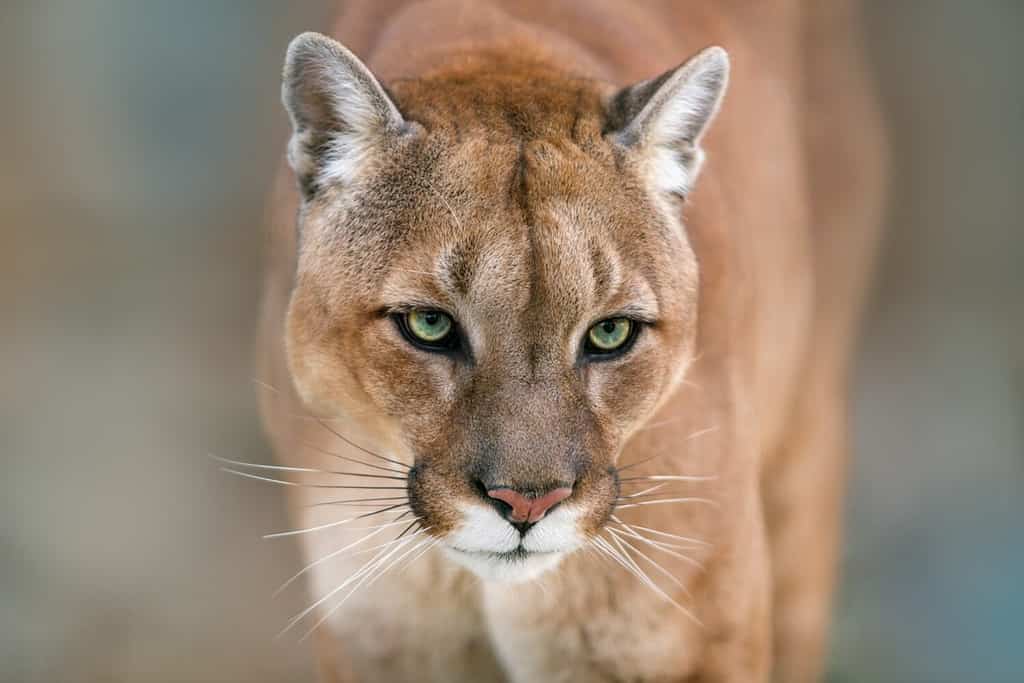
Cougars also go by the name mountain
lion
, puma, or panther.
©Kwadrat/Shutterstock.com
One of the largest predators in the Americas is the cougar. They have an enormous range stretching from Canada to the southern limits of South America. In North America, their range is only in the western part of the continent. Cougars grow up to 140-180 pounds and measure up to 8 feet from their nose to their tail tips. They usually eat larger species like deer, elk, and goats, but younger cougars will hunt raccoons, rabbits, and small livestock. Generally, cougars are a threat to raccoons only in more rural and wilderness areas. Cougars have been expanding their range in recent years, however. For example, in 2023 a cougar was sighted on doorbell cams in several neighborhoods of the Omaha, Nebraska metropolitan area.
5. Coyotes

Species of coyotes in the northeastern United States are larger than those in the West.
©Jillian Cooper/iStock via Getty Images
Coyotes are canids about the size and appearance of German shepherds. In fact, they are able to breed with dogs, producing “coydog” pups. Like raccoons, coyotes have made themselves at home alongside people in suburbs and cities. Coyotes frequently eat raccoons, as well as other small mammals like rabbits, rats, mice, and pet dogs and cats. Coyotes do run in family groups but not in packs of unrelated animals as wolves do. They are able to bring down prey much larger than themselves, such as deer. They do this by chasing, biting, and withdrawing repeatedly until their prey becomes exhausted from exertion and blood loss and the coyote can go for the jugular to make its kill.
6. Dogs

Dogs will fight with raccoons. The size of the dog species can determine the winner.
©Karen Dole/Shutterstock.com
Virtually any large breed dog could potentially chase and kill a raccoon. Various types of coonhounds are bred specifically for this purpose. However, even small dogs like terriers will bark at and attack raccoons aggressively to scare them off. Dog vs. raccoon fights are one of the main ways pets catch raccoon-borne diseases such as rabies, leptospirosis, and canine distemper. It’s always important to keep your dog’s vaccinations updated, but especially so if your dog spends time outdoors in an area frequented by raccoons.
7. Eagles

Eagles are one of the few birds of prey large enough to feed on an adult raccoon.
©PHOTOOBJECT/Shutterstock.com
Bald eagles and golden eagles are the only two species of these raptors found in North America. They are comparable in size, with wingspans of 5.9 to about 7.6 feet. Mostly they eat rabbits, squirrels, birds, mice, snakes, and lizards, but raccoons are definitely on their menu. Incredibly, raccoons also eat eagles! They can climb up into an eagle’s nest and eat eggs or fledglings while the mom is out. I think we all agree, that’s an extraordinarily risky way to get lunch!
8. Owls
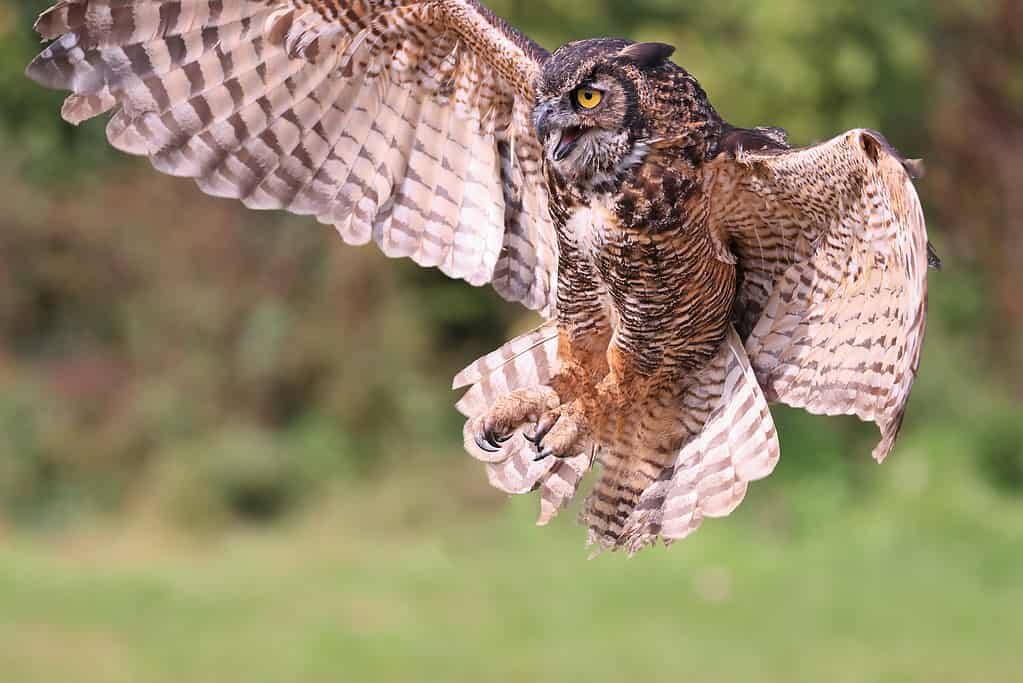
Great horned owls inhabit most of North and South America.
©Vladone/iStock via Getty Images
Because raccoons hunt at night, they are vulnerable to great horned owls, which are nocturnal birds of prey with wingspans of up to 5 feet. Owls specialize in perching motionlessly and swooping down silently on small mammals. Rabbits, raccoons, opossums, skunks, mice, squirrels, and bats are all in danger when a great horned owl is around.
9. Snakes
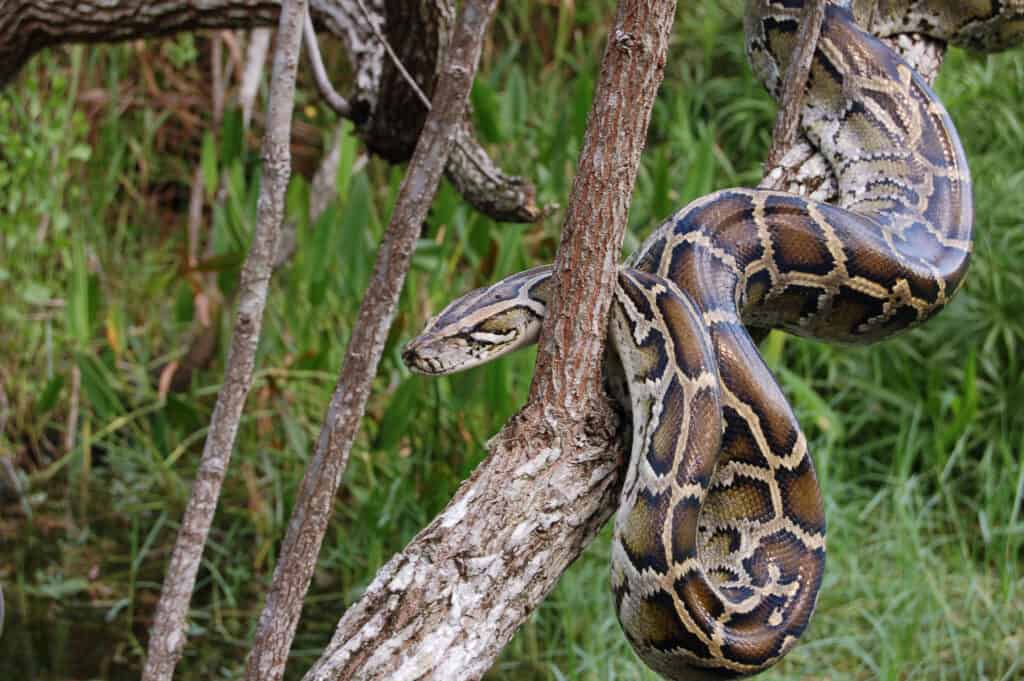
The
Burmese
python is a rapidly multiplying invasive species in the Everglades.
©Heiko Kiera/Shutterstock.com
Baby raccoons are vulnerable to being eaten by indigenous North American snake species like rattlesnakes or water moccasins. Adults are usually too large for these indigenous snake species but face an even worse threat in the Everglades of Florida. There, invasive Burmese pythons are fast replacing alligators as the apex predator species. Growing on average to 16 feet long, pythons are able to hunt in the trees or on land and can eat animals up to the size of deer or juvenile alligators. The population of raccoons, opossums, and other small mammals has decreased by over 90% in the park due to the rapid multiplication of pythons.
10. Wolves
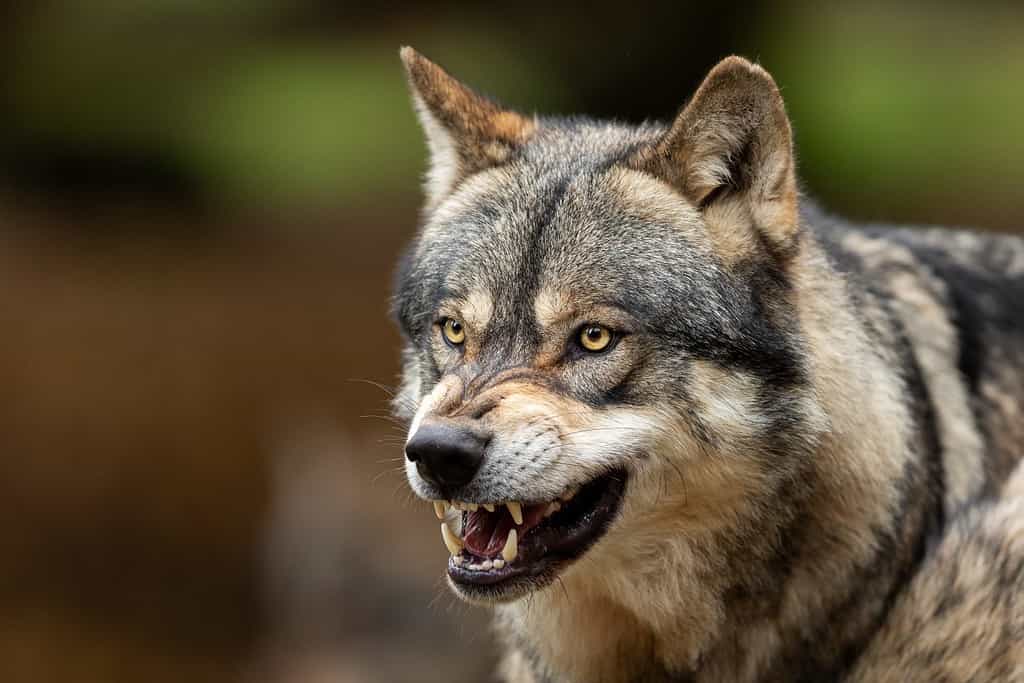
Wolves are being reintroduced into many parts of the United States.
©AB Photographie/Shutterstock.com
After centuries of overhunting, wolves have begun making a comeback in the United States. There are approximately 8,000 in the lower 48 states and 7-11,000 in Alaska. Reintroducing wolves to Yellowstone National Park reduced the population of grazing animals there. An unexpected result of this was that herd animals became more cautious about grazing in the open, allowing forests to regrow, stabilizing riverbanks, and in some cases even altering the flow of the Yellowstone River. Wolves consume a great deal of protein: as much as 20 pounds in one meal. They usually eat large animals like deer, elk, moose, and bison, but will also hunt smaller mammals like rodents, rabbits, and raccoons.
How to Deal with Raccoons on Your Property

Raccoons are attracted to your property primarily for food and water.
©StoneMonkeyswk/Shutterstock.com
Deterrence
If you don’t want raccoons on your property, your first move is to take away the things that attract them:
- Make it scary: bright lights, music, and foot traffic can cause raccoons to find a safer place to live.
- Make it smell bad: they don’t like the smell of cucumber, ammonia, vinegar, garlic, or cayenne pepper.
- Trick them: you can purchase predator urine online and spray around your property to scare off raccoons.
- Take away hiding places: cut back brush, shrubbery, and trees that give raccoons places to nest and hide or let them easily climb onto your roof.
- Remove the food: don’t plant a garden, don’t leave pet food outdoors, remove standing water, put bird feeders on tall skinny poles raccoons can’t climb, secure trash cans, and treat your yard to kill grubs.
- Shut the “doors:” block access points to crawlspaces, attics, garages, or storage sheds using mesh wire or boards.
- Get a dog: a large dog will be able to kill a raccoon, if necessary, but a dog of any size will bark and help scare off raccoons.
Removal
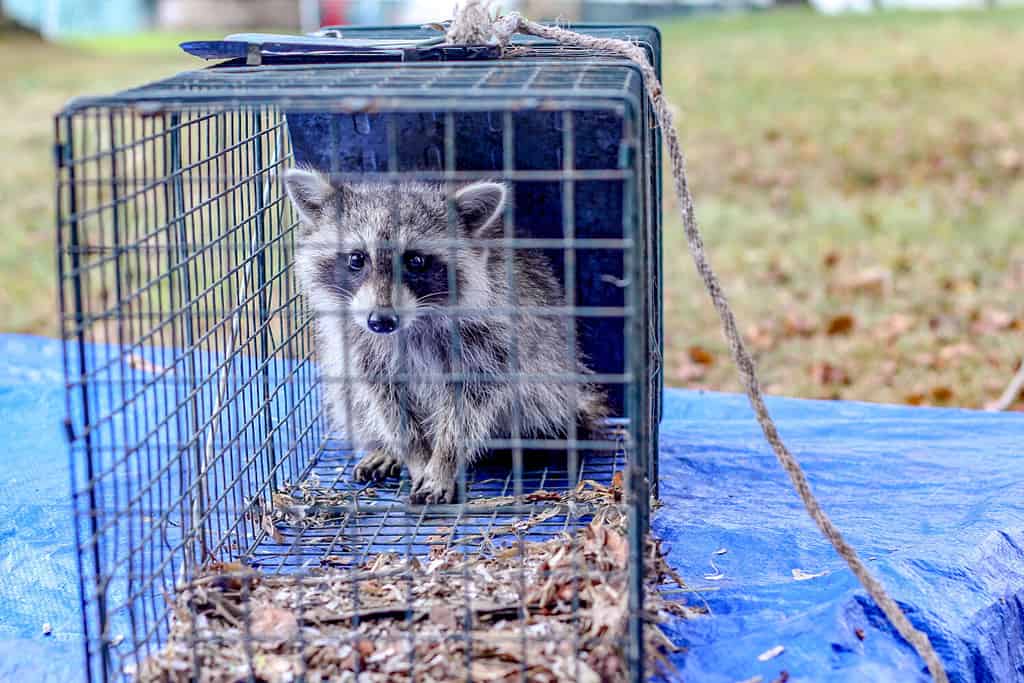
Wildlife experts will know the safest and most humane ways to remove raccoons from your property.
©Chris Wetherell/Shutterstock.com
If you’ve gone beyond the deterrence stage and have raccoons active on your property, your best option is to call your local wildlife officials and/or a professional removal service. They will know how to get rid of your masked pests safely, legally, and humanely.
If you live in a rural area, you may prefer to remove raccoons yourself. Although raccoons are not an endangered species, some counties, cities, or states have local rules you need to consider. These might include the way raccoons can be captured and/or euthanized or the need for a hunting permit. In many areas, capturing and re-releasing raccoons somewhere else is illegal to help prevent the spread of disease. Some localities make exceptions to some of their rules if you can demonstrate raccoons are damaging your property.
No Substitute for People

Urban sprawl displaced many species from their habitats that must adapt to people.
©Andrew Zarivny/Shutterstock.com
In the end, the greatest predators of raccoons are human beings. As humans have taken over more habitats and removed many of the natural predators, it is to be expected that raccoon numbers would multiply. Moreover, they find living near humans a safe haven because this is where the fewest natural predators live. Since we’re not prepared to control their numbers by releasing cougars, wolves, and pythons in our cities, it’s up to people to find humane and effective ways to maintain raccoon numbers at safe and manageable levels.
The photo featured at the top of this post is © Eric Isselee/Shutterstock.com
Thank you for reading! Have some feedback for us? Contact the AZ Animals editorial team.





